by Tom Gibson
August is pollinator party time in my backyard. Not just the steady savoring of mint by the great golden digger wasp.
Not just the business-like mining of comfrey pollen by bumblebees.
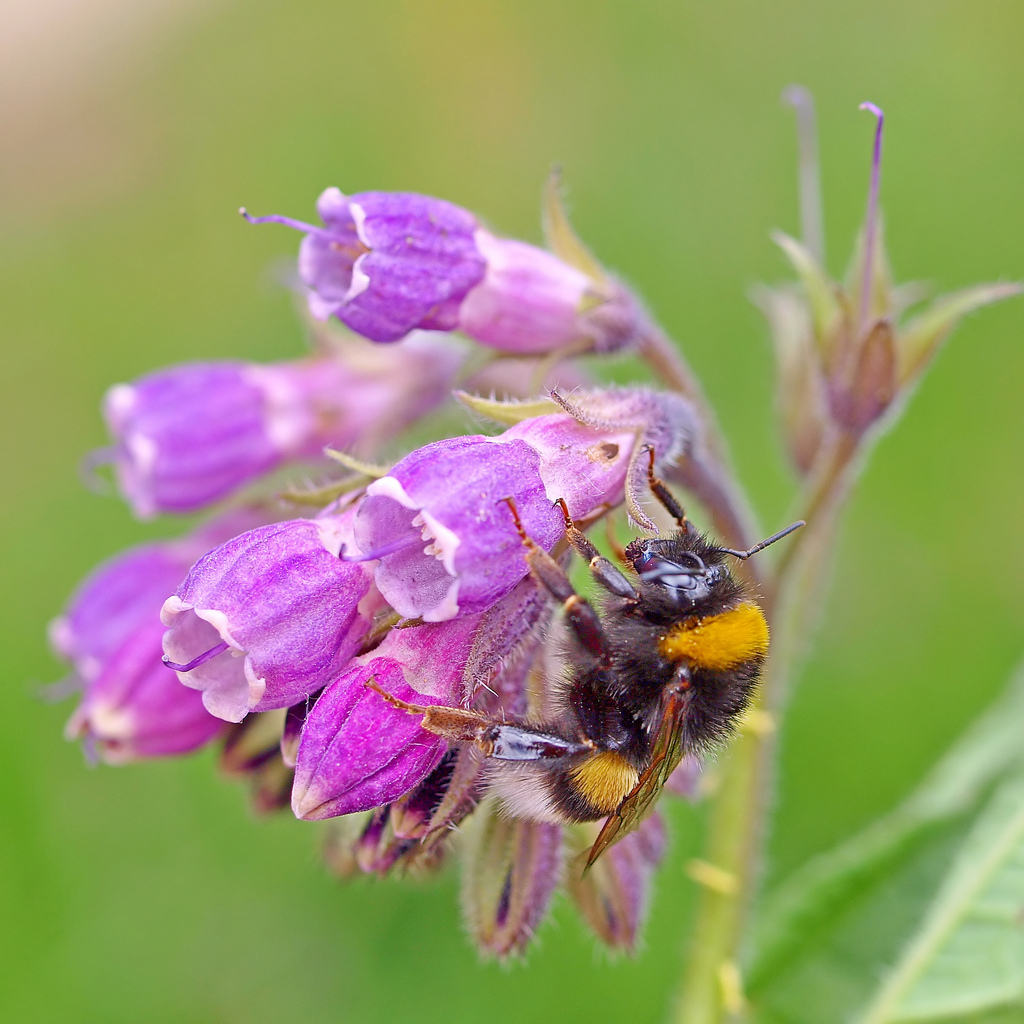 And not just careful, trip-weary harvesting of hardy ageratum pollen by monarchs on their way south.
And not just careful, trip-weary harvesting of hardy ageratum pollen by monarchs on their way south.
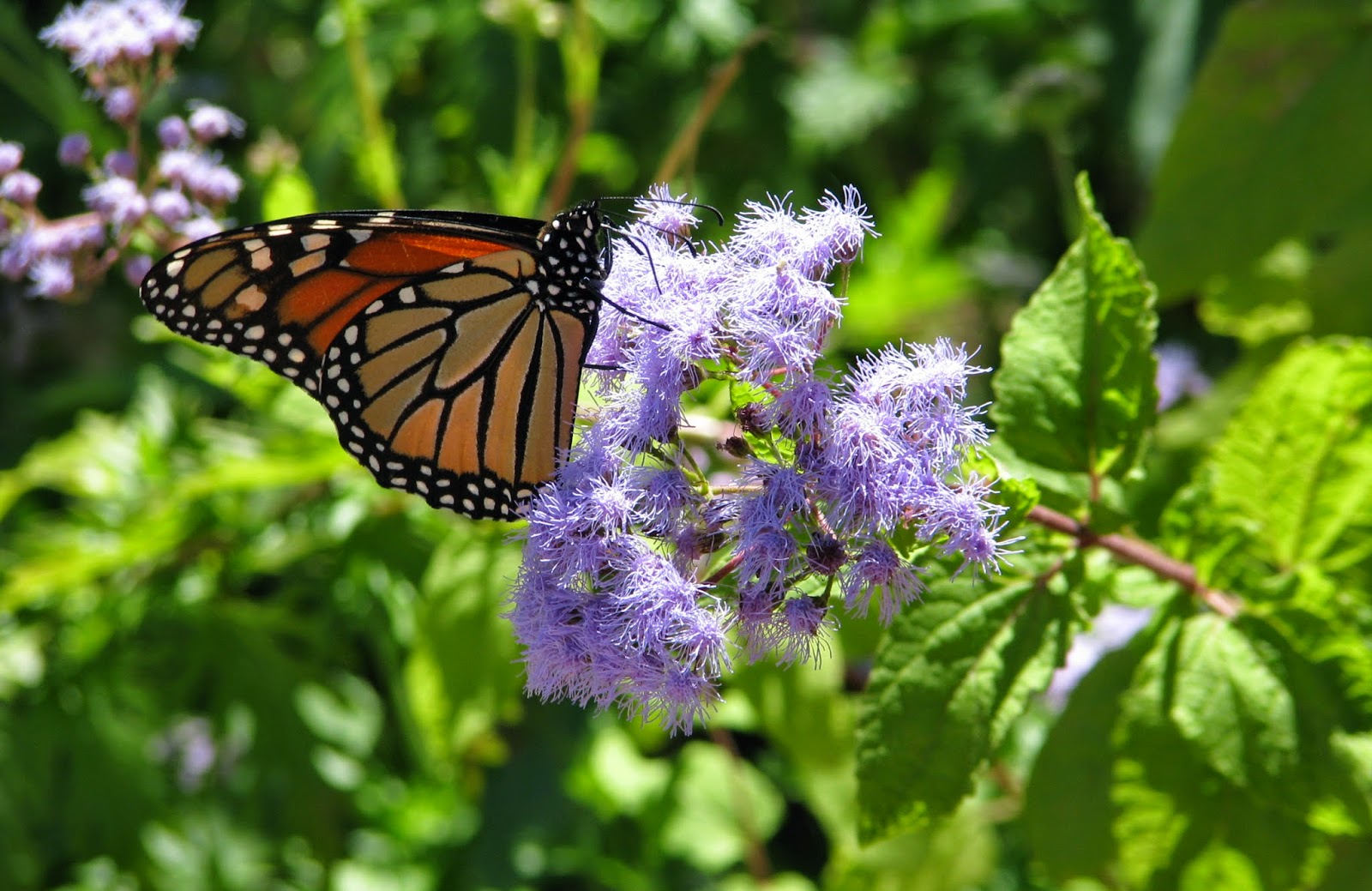 No, the real disco atmosphere—one imagines a sparkling ball and an unlimited supply of rave—occurs just above my patch of boneset (Eupatorium Perfoliatum)*. Wasps (especially), bees and other insects lurch onto boneset’s little white flowerettes, hold their position for a split second, then burst off to the next plant. They’re just so excited. And the variety! Big wasps, little wasps, bees, moths, butterflies, little flying things I don’t have a name for. Rarely do any of the feeders pay attention to their companions (though I have seen smaller, more aggressive mason wasps deliberately knock more cumbersome digger wasps off a flower). A true feeding frenzy.
No, the real disco atmosphere—one imagines a sparkling ball and an unlimited supply of rave—occurs just above my patch of boneset (Eupatorium Perfoliatum)*. Wasps (especially), bees and other insects lurch onto boneset’s little white flowerettes, hold their position for a split second, then burst off to the next plant. They’re just so excited. And the variety! Big wasps, little wasps, bees, moths, butterflies, little flying things I don’t have a name for. Rarely do any of the feeders pay attention to their companions (though I have seen smaller, more aggressive mason wasps deliberately knock more cumbersome digger wasps off a flower). A true feeding frenzy.
The only calm insect I observe around boneset is the occasional dragon fly, a non-pollen consumer and pure predator. It waits motionless for minutes on a garden stake and then swoops through the mayhem to gather a small insect meal.
I like insect-on-insect predation in my garden, and boneset is a great way to encourage it. In all the scientific journal articles I’ve read on the subject, boneset is at the top of the list of for attracting predators and parasitoids. (The latter lay eggs in host insects who eventually provide a greet-the-world, first meal for the hatched larvae.) The more predatory wasps and flies, the fewer insects like Japanese beetles that will eat my plants.
Boneset produces blossoms consisting of dozens of small white flowerettes (like Queen Anne’s lace, carrots, etc.) that make a good fit for wasp mouth parts. But their pollen must contain some special chemicals, too, that I haven’t seen described in any journal. Whatever they are, they drive wasps, bees and flies nuts.
Here are a few of the insects that stopped long enough for an iPhone close-up. (I never worry about getting stung; the insects are just too intent on locating boneset pollen.)
Here’s a paper wasp:
…and a carpenter bee:
A soldier beetle and a black hornet. The former eats aphids among other things and emits a poison that makes it inedible to potential predators…. like hornets.
But what happens when a defenseless herbivore finds itself on the same flower as a hornet? The same as a zebra and a lion at the same watering hole. Give the lion plenty of space. I’ve seen an ailanthus web worm moth like the one in the upper right of this picture dive under a boneset bloom to escape from a wasp and hide there until danger passes. The little mason bee on the left, however, poses no such threat.
Here’s a syrphid fly, one of those parasitoid egg layers I mentioned above
And is this a wasp or thick-headed fly? I think the latter; the two circles on its abdomen are a possible clue. Many flies have evolved to look like more dangerous wasps. The thick-headed fly parasitizes bumblebees.
*Boneset gets its odd name from its use in (very) primitive folk medicine. Because boneset leaves join right through the stem (see picture below), folk healers would wrap broken bones in boneset poultices and give their patients boneset tea—all in the hopes for similar joining.
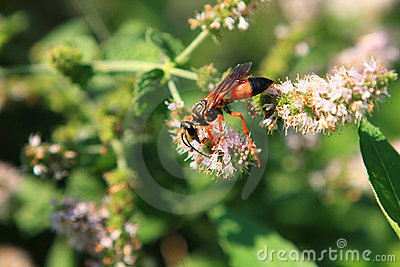
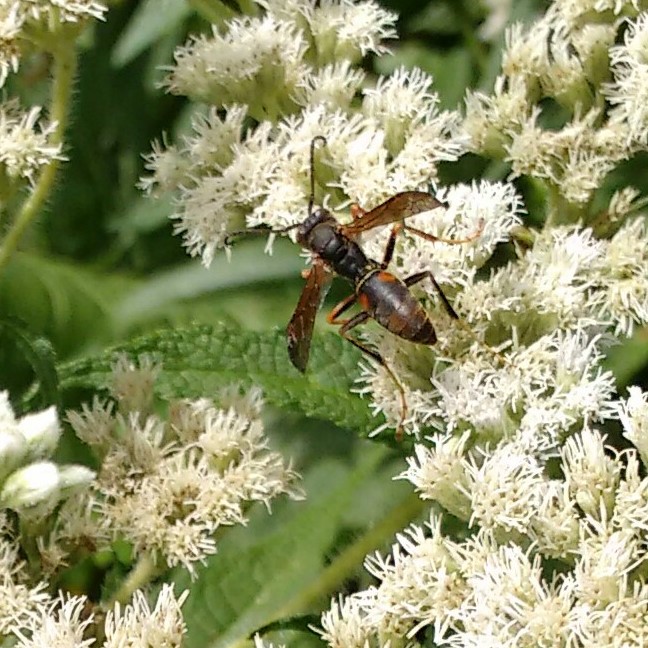
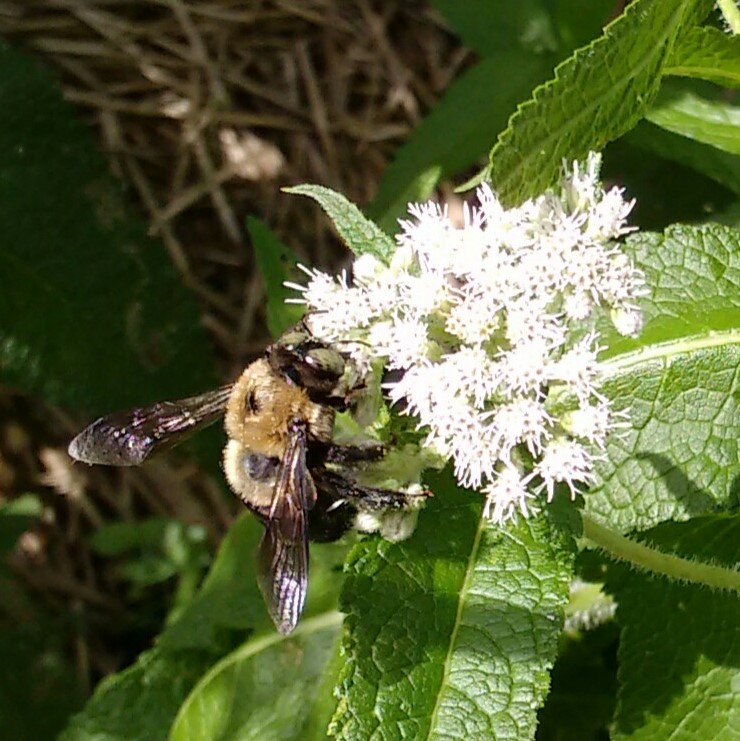
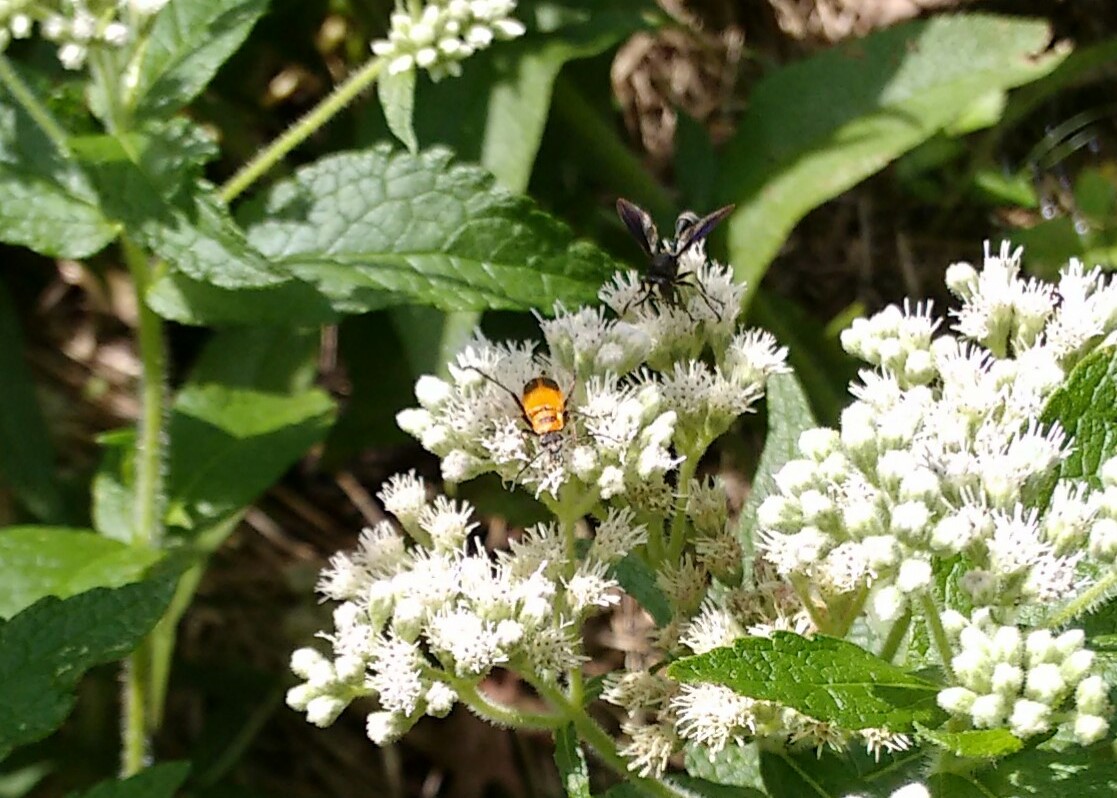
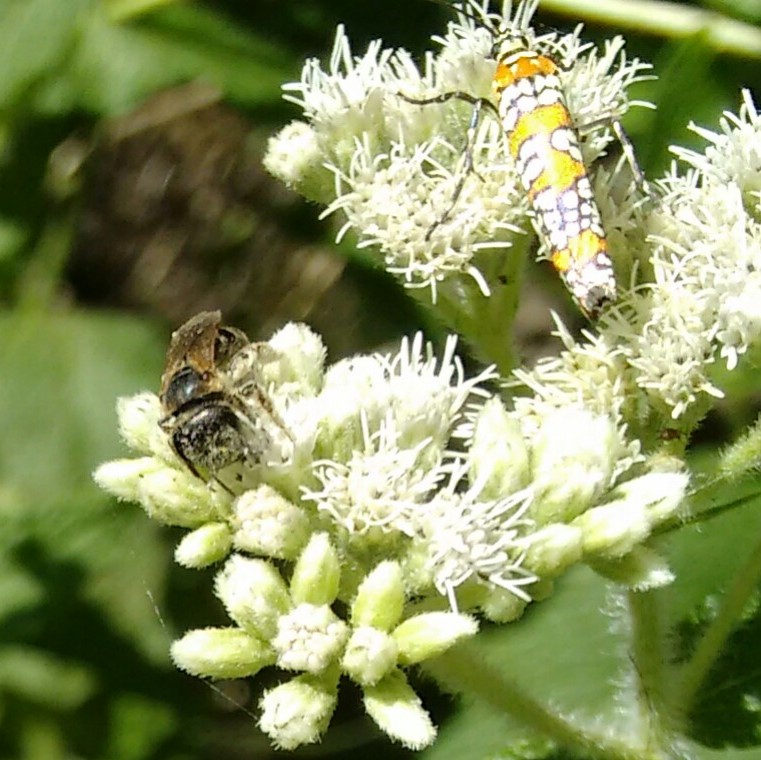
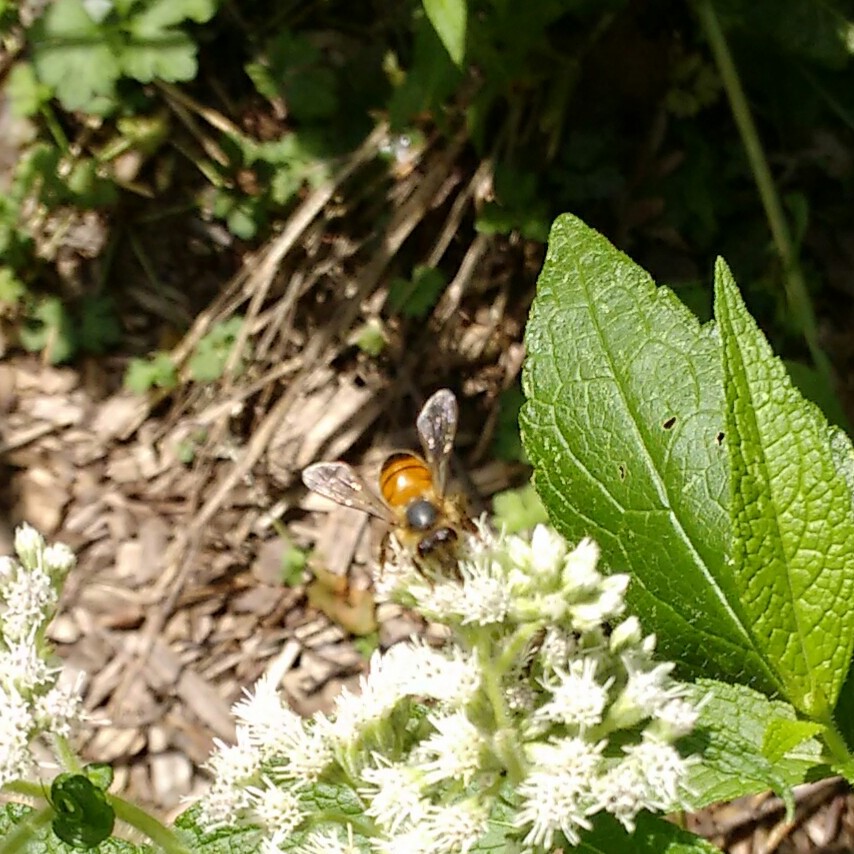
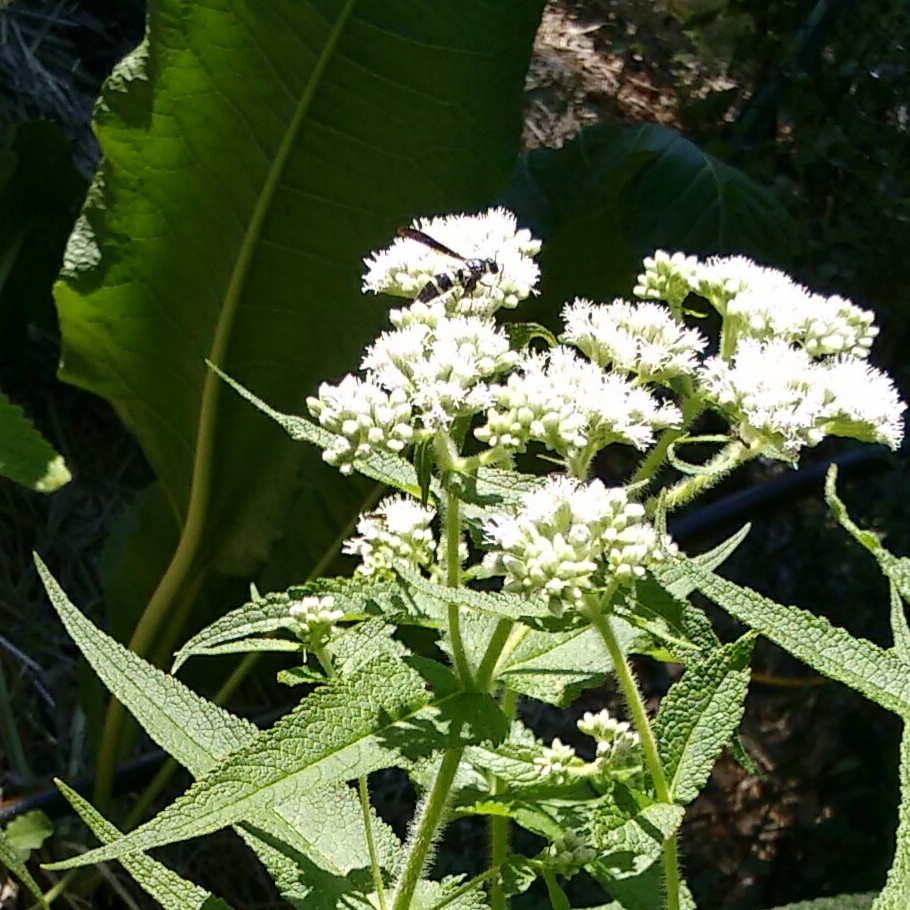
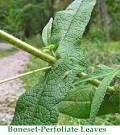
Great pictures! And interesting information!